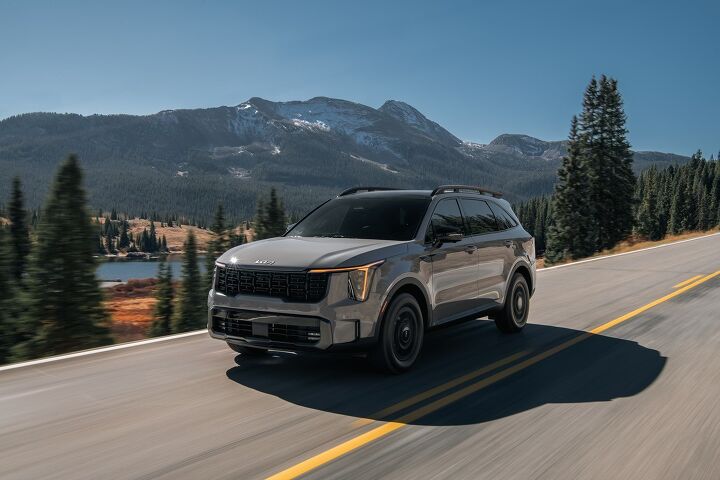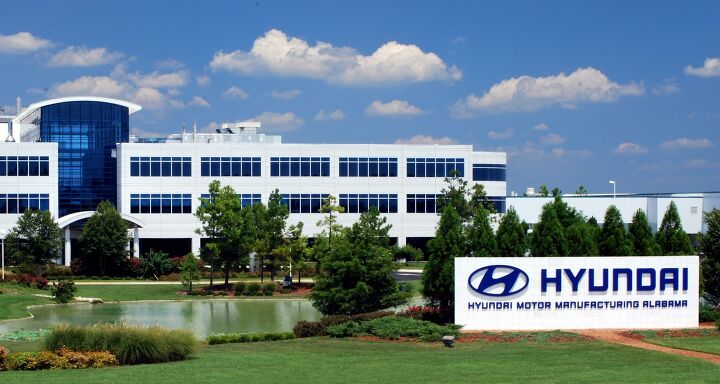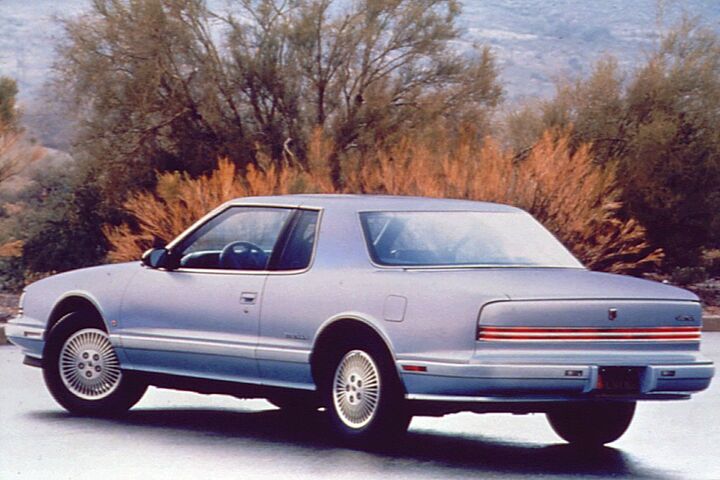#NewsBlog
Ford Scales Back Michigan Battery Plant Investments
Ford has said it will restart construction on the electric vehicle battery facility it’s building in Marshall, Michigan, after pausing work when the UAW strike kicked off a couple months ago. But the company has also announced that it would be “re-timing and resizing some investments.”
Ford Issues Official Statement On UAW Contract Ratification
While the United Auto Workers’ contract seems to be a done deal for all three Detroit-based automakers, Ford is the only brand that’s issued any formal statements on ratification thus far. But there’s not much to pick apart in the release. The company avoided opportunities to promote itself as the brand that seemed most willing to accommodate the UAW and only brushed against assertions that paying workers more would add to its operational costs.
Driving Dystopia: Judge Dismisses Automotive Privacy Lawsuit
Last week, a federal judge refused to have the courts reexamine a gaggle of class action lawsuits claiming automotive manufacturers had violated Washington State's privacy laws after allegations that on-board infotainment systems were recording customers’ private text messages and mobile phone call logs. Despite substantial evidence that the above claims are not only true but also just the tip of the iceberg as manufacturers have normalized some of the most egregious data harvesting we’ve seen, the Seattle-based judge said the allegations were not severe enough to be considered a violation of the Washington Privacy Act (WPA).
United Auto Workers Ratify New Labor Contract
Despite several large facilities voting against the UAW labor contract negotiated with Detroit automakers, the deal has been ratified by union members from both General Motors and Stellantis. This is based on the UAW’s own vote tracker and has put to bed any serious fears that GM might have to reenter negotiations.
While Ford’s voting hasn’t yet reached the point where we can say anything definitive, its negotiations with the union also went the best. The Blue Oval offered sweeter deals than rival automakers and sooner, too. It’s on the brink of ratification and may even have reached that point by the time you’re reading this.
Abandoned History: Oldsmobile's Guidestar Navigation System and Other Cartography (Part IV)
General Motors spent a lot of time and money in the development of TravTek GPS. As we learned in our last installment, the comprehensive (if clunky) navigation system used a touchscreen, had live traffic information, and could even make phone calls. Installed in 100 Toronados used in the greater Orlando area for an entire year, GM, AAA, and various government parties were eager to see just how useful the system was and if it was worthwhile. Narrator: It wasn’t. Let’s find out why.
Chinese Smartphone Company Previews First EV
Despite years of talk that Apple would eventually start building all-electric vehicles, China’s Xiaomi looks to have beaten the American brand to the punch by previewing the first production EV designed by an established consumer technology company. Though designed might be the wrong word to use as the front of the SU7 sedan appears to have been lifted off the McLaren 750 S while the back is pure Porsche Panamera.
Kia Introduces Two EV Concepts at 2023 Los Angeles Auto Show
LOS ANGELES -- In addition to the updated 2024 Sorento, Kia has unveiled two concepts today at the 2023 Los Angeles Auto Show -- the EV3 and EV4.
2024 Kia Sorento -- Family Influence Brings Rugged Facelift
LOS ANGELES -- Boxes are in these days, it seems.
OK, that's probably a bit of an overstatement -- there are plenty of crossovers on the market with swoopy styling -- but the facelifted 2024 Kia Sorento is definitely following the rugged/boxy trend.
2024 Hyundai Santa Fe -- Open for More
LOS ANGELES -- No, we haven't turned into a late-night infomercial, saying "but wait, there's more!"
We're quoting the tagline from the press release for the 2024 Hyundai Santa Fe: "Open for More." So tagged because the liftgate opening is larger.
And, well, there's more. Read on.
The 2025 Hyundai Ioniq 5 N Has Hi-Po Attitude
LOS ANGELES -- High performance isn't just limited to vehicles that burn dead dinos in some way, shape, or form. EVs can get in on the fun, too.
The 2025 Hyundai Ioniq 5 N isn't the first high-performance EV -- there are several examples on the market. Instead, it's another reminder that EVs don't have to be boring commuter machines.
Study: Giant Pickups and SUVs More Dangerous to Pedestrians, Obviously
A recent study by the Insurance Institute for Highway Safety (IIHS) has claimed that large, blunt-nosed pickups and SUVs pose a greater risk to pedestrians than other vehicle types. It’s quite possibly the most obvious outcome to any study we’ve ever seen and it seems to crop up every few years even though the vehicles in question just keep getting bigger and squarer.
BMW Announces National Adaptive EV Charging System Expansion
BMW has announced it is expanding its ChargeForward incentive program to drivers of electric and plug-in hybrid vehicles living in the contiguous United States. The proclamation coincides with the launch of the brand’s all-electric i5 and is supposed to incentivize customers into “aligning their vehicle charging with times when renewable energy is highest on the grid.”
That’s progressive-corporate speak for charging vehicles when the demand for electricity is lower to ensure less energy is wasted. One of the biggest obstacles presented by EVs is that widespread usage would result in explosive energy demand many electrical grids may not be able to accommodate. BMW believes this can be mitigated with ChargeForward by ensuring user charging times are carefully monitored and scheduled.
UAW Contract Voting Has Been Mixed Thus Far
Unionized Ford workers in Louisville, Kentucky, and General Motors employees from Spring Hill, Tennessee, have voted no on the contract agreement reached by the United Auto Workers. While this only represents a fraction of the UAW votes needed to ratify the updated contract, it’s a sign that the deal hasn’t yet gone through and may not if the trend continues.
Hyundai Workers Also Slated for Pay Raise
With Honda having followed Toyota in offering employee raises in the wake of the United Auto Workers (UAW) appearing to have settled contract negotiations in Detroit, the rest of the industry appears to have set off a Domino Rally of wage increases. Hyundai is now offering manufacturing workers more than they were making last year and has promised to bump pay by 25 percent through 2028.
Abandoned History: Oldsmobile's Guidestar Navigation System and Other Cartography (Part III)
We return to our spicy Oldsmobile content this week, with the introduction of GM’s first publicly tested in-car navigation system, TravTek. Arriving in the early Nineties, TravTek was launched more than two decades after GM’s magnet-based DAIR prototype failed to make production. This time The General was determined to make good on their big investment. Onward, to Orlando!






























Recent Comments